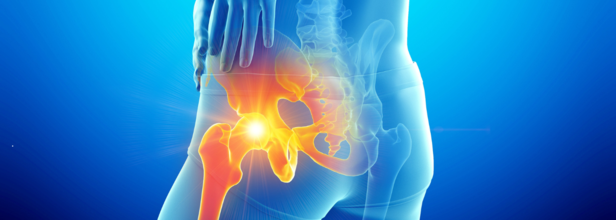
Credits: Canva
When Can You Start Your Regular Activities After A Hip Replacement Surgery?
Hip replacement surgery could sound daunting, however, the recovery of the same has come a long way in the recent years. With many technologies being developed in the medical field, and thanks to modern surgical techniques and improved implants, most patients can now look forward to a smoother and a faster healing process. Here is what you can expect from your post surgery:
Pain Management And Early Movement
Right after the hip surgery, you will have pain, which you may have to manage, although total hip replacement is now less invasive. It also means that the patients can now begin their recovery period sooner. Physical therapy also starts the same day as surgery, and walking is encouraged as early as possible to reduce the risk of blood clots, especially pulmonary embolism.
While patients are allowed to bear weight on their operated leg, they are also encouraged to use crutches or a walker at first to support balance and build strength. Some muscle and joint discomfort is also expected, especially around the buttock, groin, thigh, and incision site.
So, what can you do to manage this pain? You can consume the prescribed combination of low-dose medications that can work together. The "opioid-sparing" approach also here helps to avoid strong opioid and their side effects. These side effects include dizziness, drowsiness, constipation, and nausea. Other pain relief options could also include cryotherapy, which means icing the surgical area. There are also non-medication alternatives like meditation and reiki therapy.
Getting Yourself Home
The sooner you go home, the better it is. In fact, many patients return home either the same day or after one night in the hospital. The less invasive nature of modern hip replacement also means that lengthy stays at the hospital are no longer necessary for most patients.
Unless a patient has serious mobility or other medical issues, recovery at home is also preferred. Walking more at home also reduces the risk of complications such as pneumonia or deep vein thrombosis which could be caused by prolonged immobility and being bed ridden.
Taking A Walk And Climbing Stairs
Most patients are back on their feet the same day as surgery, as soon as anesthesia wears off. Walking early promotes circulation and helps prevent blood clots. Some patients may even begin climbing stairs that day, although mobility aids like walkers or crutches are often used for the first few days or weeks.
What Exercises Can You Try For A Better Recovery?
Pre-surgery physical therapy, or “pre-hab,” can build strength and balance in advance, helping speed up recovery later. After surgery, exercises typically include:
- Gait retraining to correct walking patterns
- Balance and proprioception exercises to prevent falls
- Strengthening the hip muscles, especially the hip flexors and abductors
- A balanced diet and good sleep habits also play a key role in healing
When Can You Return To Doing Regular Activities?
The timeline for getting back to your normal life can depend on each person and their timeline of recovering. However, walking is encouraged right away and other activities may be resume at 6 to 8 weeks. However, if your work requires heavy labour, it is encouraged to wait for 3 months.

(Credit-Canva)
Sitting For Elongated Hours? Yoga To Relieve Lower Back Pain
Yoga is one of the best ways to ensure your body’s well-being. Whether you are trying to build muscle, increase your flexibility or relieve pain, yoga helps. The stretches and poses in yoga can help you work all your muscles as well as joints. One of the most popular ones are back exercises.
There are many reasons why your back may be hurting. With people spending more hours sitting on desks, whether it is for their jobs, studying etc. When you exercise your back, not only will you strengthen your back muscles, but you will also strengthen your core. Weak core muscles can also contribute to back pain during everyday activities. Medical experts agree that any exercise that strengthens the core is beneficial for lower back pain. While studies suggest yoga isn't significantly superior to other forms of exercise and stretching, it may offer long-lasting pain relief.
Downward-Facing Dog
This classic pose stretches and strengthens almost all muscles, relieving pressure on the spine and easing back tension. Start on hands and knees, lift knees off the floor, and raise your tailbone towards the ceiling, pressing into your hands. For a deeper lower back stretch, bend your knees and lengthen your tailbone upwards.
Child's Pose
Despite appearing restful, Child's Pose effectively stretches the back and hip muscles. It's also a great way to de-stress, especially before bed. Begin on hands and knees, bring big toes together, widen knees, and press hips back towards heels. Walk arms forward, resting forehead on a block, folded arms, or the mat, allowing shoulders to soften.
Reclined Half Pigeon
This variation of Pigeon Pose stretches the hip rotators and flexors. Tight hips can contribute to lower back pain, making this stretch beneficial. Lie on your back with bent knees, cross your left ankle over your right thigh, and thread your left arm through the leg triangle. Hold your right shin or hamstring with both hands, flex both feet, and hug legs towards your body, breathing into hips and lower back.
Triangle Pose
Triangle Pose effectively stretches both the hips and the spine. Facing the long edge of your mat, extend arms to a T and step feet wide. Turn your right toes to the top of the mat and angle your left foot slightly inward. Engage your core as you reach your right arm and torso forward, placing your right hand on the ground or a block outside your right ankle. Extend your left arm straight up, gazing towards your left thumb or straight ahead.
Cat-Cow Pose
Moving between Cat and Cow stretches the back muscles, lengthening and increasing the spine's flexibility. Start on hands and knees, aligning hands under shoulders and knees under hips. Tuck toes for stability and engage your lower abdomen. Inhale, relax your belly down, draw shoulder blades together to open your chest, and lift your gaze into Cow Pose. Exhale, arch your back into Cat Pose, pressing the ground away and tucking your chin to your chest.
Standing Forward Bend
This pose stretches the hamstrings and back muscles. Stand with feet shoulder-width apart and knees loose. Exhale as you hinge at your waist and bend forward, reaching towards the floor. Bending your knees helps lengthen the lower back and deepen the stretch in the legs. Hold for 10 to 20 breaths and repeat as needed.
Low Cobra
Low Cobra helps strengthen the back muscles, promoting healthy lower back alignment and body awareness. Lie on your stomach with forehead on the mat, slide palms back to align thumbs with lowest ribs, and press down through the tops of your feet. Inhale, engage your back body, and curl your chest up, pressing palms into the mat and drawing shoulder blades down and in. Hold for one to five breaths and repeat two to three times.

(Credit-Canva)
Sitting In This Yoga Pose Can Boosts Digestion And Relieve Constipation
Unlike what many people believe, yoga can be easily added into your daily routine and activities. Yoga asanas can be done throughout the day, without making it too overwhelming. For example, doing the mountain pose along with some stretches after you wake up to doing the child pose, followed by cobra pose before bed. Another such yoga pose is Vajrasana, or the thunder or the diamond pose. This is a sitting pose which is not only vital for our posture, but also for digestion.
Doing this yoga pose, after eating for about 10-15 minutes, improves digestion and is a great aid to relieve constipation. This pose is often recommended as a meditational pose or a breathing pose, as it brings about calmness and focus on our body. There are many benefits of Vajrasana.
Benefits of Vajrasana
- Improve concentration
- Reduce feelings of anxiety
- Increase body flexibility
- Lower blood pressure and heart rate
- Help manage symptoms of type 2 diabetes
It's important to remember that yoga should not replace any existing medical treatments, such as medication, unless you have discussed this with a healthcare professional.
How to Perform the Vajrasana Pose
Here is a step by step guide on how to do the Vajrasana pose:
Step 1
Begin by kneeling on the floor. Using a yoga mat can make this more comfortable.
Step 2
Bring your knees and ankles close together, pointing your feet straight back in line with your legs. The soles of your feet should face upward, with your big toes touching.
Step 3
As you exhale, slowly sit back onto your legs. Your buttocks will rest on your heels, and your thighs will rest on your calves.
Step 4
Place your hands on your thighs and gently adjust your pelvis slightly forward or backward until you find a comfortable position.
Step 5
Breathe slowly in and out as you straighten your spine to sit up tall. Imagine the top of your head pulling you upward and gently press your tailbone down towards the floor.
Step 6
Keep your head straight, looking forward with your chin parallel to the floor. Rest your hands on your thighs with your palms facing down and your arms relaxed.
Tips To Make Vajrasana More Comfortable
To make Vajrasana more comfortable or less challenging, several adjustments can be helpful. For those who experience ankle pain, placing a folded blanket or even another cushion under the shin, allowing the toes to extend off the back, can provide relief. If knee pain is an issue, try positioning a rolled or folded blanket or towel across the calves and tucking it behind the knees for added support. Finally, for general sitting discomfort, placing a yoga block horizontally between the feet can help support some of your weight and reduce pressure on both the ankles and knees.
When Should You Avoid Doing Vajrasana?
It's a good idea to talk to your doctor before starting any new yoga program. They can advise you on how yoga might affect your current health and suggest ways to avoid potential problems. It is often recommended that you should not perform Vajrasana if you have knee problems or have recently had surgery or a spinal cord condition, especially involving the lower part of your spine. Another reason why you should avoid this is if you have intestinal ulcers, a hernia, or other intestinal issues.

(Credit-Canva)
Don’t Let The Heat Stop You – Summer Workouts You Should Try
With summers around the corner, the heat can drain our energy and making it impossible to even leave our comfortable cool homes, let alone making a point to go for a workout. You barely have any energy left by the end of the day and to be able to do the exercises and stay healthy is a common yet displeasing experience that most of us are set to go through in the coming days.
However, heat cannot be an excuse to skip workout in order to stay healthy. There are certain things you should take into consideration are what kind of exercises you should do in this heat and whether there are any you should avoid.
Summer Exercises To Try
Burpees
The burpee is a top-notch exercise for your summer fitness. It works nearly every muscle, building strength from head to toe. This dynamic move also significantly boosts your heart health with each repetition. Start standing, then crouch, jump your feet back to plank, jump them forward, and leap up with arms overhead. Aim for sets of 5–10 reps.
Stationary Cycling
Using a stationary bike at the gym is a great way to get your cardio in while you listen to podcasts or watch videos. Just set the bike to fit you well before you start your entertainment. Adjust the seat to your hip height and pick a resistance you like. Pedal for 10-20 minutes to begin, working up to 30 minutes as you get fitter.
Walking Lunges
Walking lunges are a super handy exercise because you can do them almost anywhere, making it easy to stick to your summer workout even at home. Stand with feet shoulder-width apart. Step forward with one leg, bending both knees to about 90 degrees. Push off your front foot to step forward with the other leg. Do sets of 10 lunges per leg.
Treadmill Intervals
Don't let the treadmill be boring! Make your workout interesting by changing the incline and speed. Try running for three minutes, then walking for three minutes, and repeat. This interval training keeps your heart rate up and makes the time go by faster. Adjust the speed and incline to challenge yourself and keep things exciting.
Swimming
Beat the summer heat with swimming, a great exercise that works your whole body without stressing your joints. It uses many muscles, improves your heart health, and helps manage your weight gently. Try swimming for 30-45 minutes several times a week, and switch up your strokes to work different muscles.
Kayaking or Paddleboarding
For a fun way to exercise on the water during summer, try kayaking or paddleboarding. These activities cool you down and give your core and upper body a great workout. Paddling uses your arms, shoulders, back, and core, making you stronger and more stable. Aim for sessions of at least 30 minutes, and always wear a life vest for safety on the water.
© 2024 Bennett, Coleman & Company Limited

